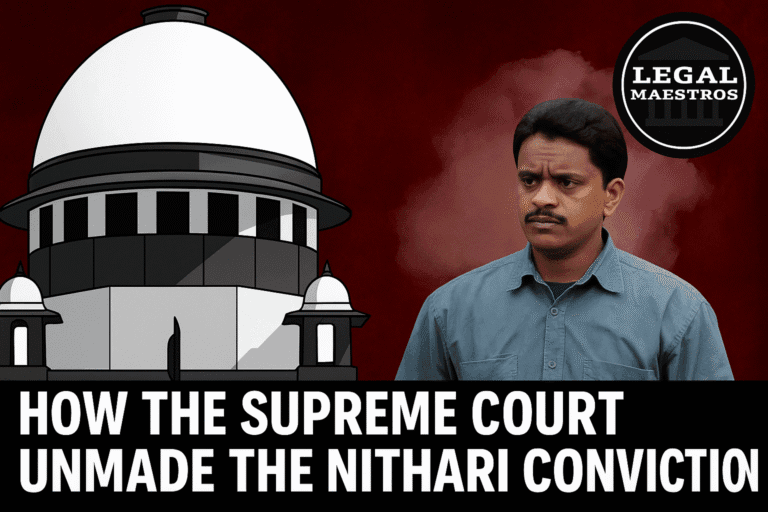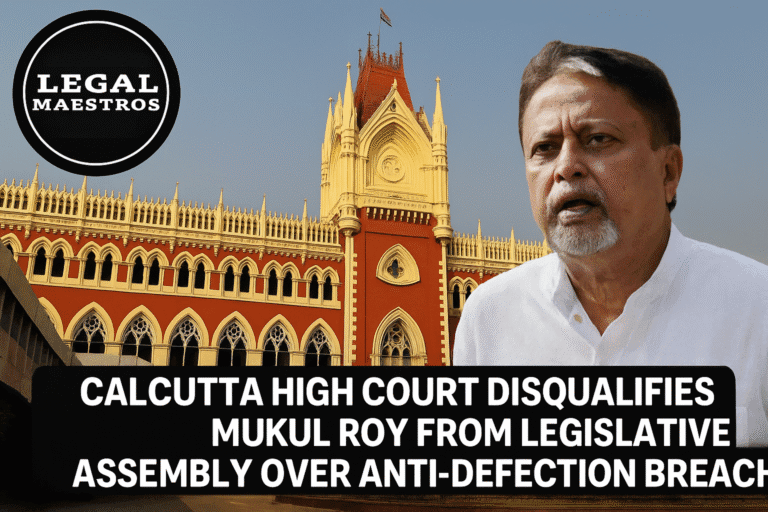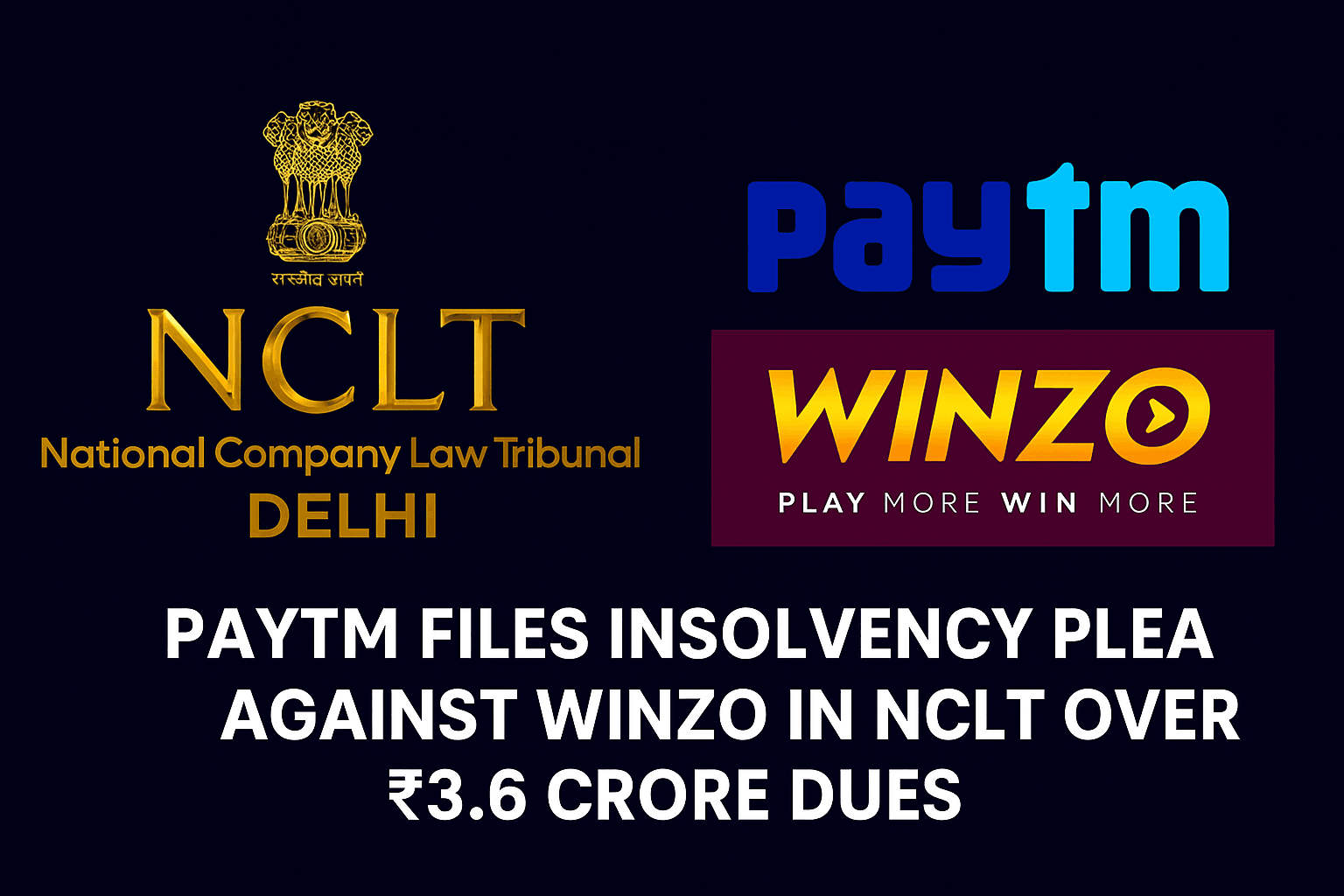
Flood Damage Under Consumer Law: A Supreme Court Clarification
The Starting Point
The recent ruling that was handed down by the Supreme Court in the case of Gopal Dikshit v. United India Insurance Company Ltd. addressed a disagreement on whether or not damage that is caused by heavy rains is considered to be a specified danger under a personal homeowner’s insurance policy. As a result of the policyholder’s appeal against the National Consumer Disputes Redressal Commission’s (NCDRC) decision to dismiss his claim, this case has arisen in accordance with Section 23 of the Consumer Protection Act of 1986. Upon reviewing the survey reports and expert certificates, the court decided to overturn the order issued by the NCDRC and remand the case to the court for further consideration of compensation.
Background Information on the Facts
There was a multi-story structure in New Delhi that was owned by the appellant. The building was insured for ₹1.50 crore under a householder insurance policy that was effective from March 2016 to March 2017. Downpours were experienced in New Delhi during the end of August in 2016. The appellant was out from the 24th to the 29th of August, and upon his return, he discovered that his basement had been flooded. On the 30th of August, he quickly erected a booster pump, but he was unable to drain all of the water there.
After conducting an inspection of the location on September 3, the first surveyor for the insurer indicated that the severe rain that occurred on August 25 allowed water to enter through the flooring, causing damage to the building and its contents. A second survey was conducted by the insurer, and the final report, which was delivered on October 18th, stated that the damage was caused by continual seepage and not flooding. Seepage was not a named risk in the insurance, thus the insurer rejected the claim and stated that it was not covered by the policy. A complaint was submitted by the appellant to the NCDRC, which ultimately decided in favor of the insurer.
For any queries or to publish an article or post or advertisement on our platform, do call at +91 6377460764 or email us at contact@legalmaestros.com.
In accordance with the Consumer Protection Act, the legal legal framework
The Supreme Court is given the authority to consider appeals against orders issued by the NCDRC by virtue of Section 23 of the Consumer Protection Act. According to the Act, consumers are protected from unfair business practices, which may include the rejection of legitimate claims. In the policy wording, the most important legal question was whether or not “flood” or “inundation” covers this harm, or whether or not “seepage” falls beyond the scope of insured dangers. The interpretation of contractual agreements is guided by general rules of contract law, which require plain and unambiguous wording for the purpose of excluding liability.
The Interpretation of Risks Covered by Insurance Policies
Policies for insurance include a list of specific risks that are covered by the policy. The phrases “flood” and “inundation” suggest fast outpouring of water. On the other hand, the term “seepage” refers to a slow and gradual invasion. The insurance maintained that continual seepage was the true reason, excluding the claim. It was the appellant’s contention that the volume and pace of water entering the basement, which was three feet within three days, could not be attributed to seepage but rather to flooding.
Survey Reports and Expert Certificates as the Primary Sources of Information
The reports that were provided by structural engineers and surveyors were fundamental to the analysis that the court conducted. Flooding was identified as the cause of the flooding in the initial survey report, which was dated September 6, 2016, and reported that heavy rains had occurred on August 25 and that water had penetrated the flooring. According to an impartial certificate issued by International Consultants & Technocrats, the basement was flooded as a result of severe rains. An further report from Chordia Engineering Consultancy Services documented flooding that occurred during the final week of August as a result of rainfall.
For any queries or to publish an article or post or advertisement on our platform, do call at +91 6377460764 or email us at contact@legalmaestros.com.
There was no mention of basement flooding in the study that was selected by the insurance, which was delivered by Unique Consulting Engineers on September 7th. The report merely mentioned long-term seepage corroding reinforcement. The report addressed structural safety, but it did not establish a connection between seepage and the damage to the basement. The Court determined that it was not relevant to the overarching question of cause.
The Most Important Concern Regarding A Causal Connection
The idea of proximate cause is a fundamental principle in the discipline of insurance law. The extent of coverage is contingent on whether or not the insured danger is the direct cause of the loss. In its decision, the Court determined that the clear attribution of damage to flooding that was made in the initial assessment, which was displaced by a later report that was not supported, indicated that heavy rain was the proximate cause. Due to the sudden reversal that occurred without any additional evidence, the second survey was seen to be arbitrary.
What is the burden of proof and how does the evidence stack up?
In accordance with the Consumer Protection Act, the initial burden of demonstrating that there is a prima facie case lies with the complaint. The information presented by the appellant, which included various certificates from experts, was sufficient to prove that flooding had occurred. After that, the insurer was required to demonstrate that the loss was caused by a risk that was not covered by the policy. It was not possible to relieve this responsibility by relying on a delayed survey report without providing a counterargument to the findings of the initial report.
For any queries or to publish an article or post or advertisement on our platform, do call at +91 6377460764 or email us at contact@legalmaestros.com.
The importance of procedural fairness and reassessment by arbitrators
In spite of the fact that the initial report was completely satisfactory, the insurance decided to do a second survey 10 days after the incident. For no apparent reason, the second poll, which was conducted on October 18th, contradicted the previous survey. This reassessment was seen to be arbitrary by the court, and it was declared invalid. In order to maintain procedural fairness, it is imperative that subsequent investigations do not undercut prior, reasoned judgments without providing valid grounds.
Special Instructions for Quantum Evaluation
In spite of the fact that it acknowledged that flooding was the root cause, the Supreme Court did not provide any specific compensation figures. Instead, it sent the matter back to the NCDRC so that it may assess compensation in accordance with the policy while adhering to the provisions of the contract and the legislation that was applicable. Regarding the decision of relief and the gathering of facts, this method acknowledges and respects the specialized jurisdiction of consumer forums.
Insurers and policyholders should be aware of the implications.
The judgment emphasizes that when it comes to rejecting claims, insurance companies are required to rely on data that is both clear and current. The implementation of exclusion clauses must be absolutely precise. Those who have insurance policies are obligated to swiftly collect and store evidence, which may include meteorological data and judgments from experts. In the event that insurers fail to resolve discrepancies in survey findings in an open and honest manner, they run the risk of having their repudiations deemed invalid.
For any queries or to publish an article or post or advertisement on our platform, do call at +91 6377460764 or email us at contact@legalmaestros.com.
This ruling makes it abundantly clear that heavy rainfall that results in abrupt flooding is considered to be associated with typical flood-related dangers and cannot be recharacterized as seepage in order to deny cover. In its decision regarding the treatment of claims under the Consumer Protection Act, the Supreme Court placed a strong emphasis on the proper application of survey reports, the proximate cause doctrine, and procedural fairness. In addition, the remand for quantum guarantees that the appellant will be provided with a just remedy for his loss in accordance with the conditions of the policy.




![Research Assistantship @ Sahibnoor Singh Sindhu, [Remote; Stipend of Rs. 7.5k; Dec 2025 & Jan 2026]: Apply by Nov 14, 2025!](https://legalmaestros.com/wp-content/uploads/2025/11/Gemini_Generated_Image_s0k4u6s0k4u6s0k4-768x707.png)
![Karanjawala & Co Hiring Freshers for Legal Counsel [Immediate Joining; Full Time Position in Delhi]: Apply Now!](https://legalmaestros.com/wp-content/uploads/2025/11/Gemini_Generated_Image_52f8mg52f8mg52f8-768x711.png)